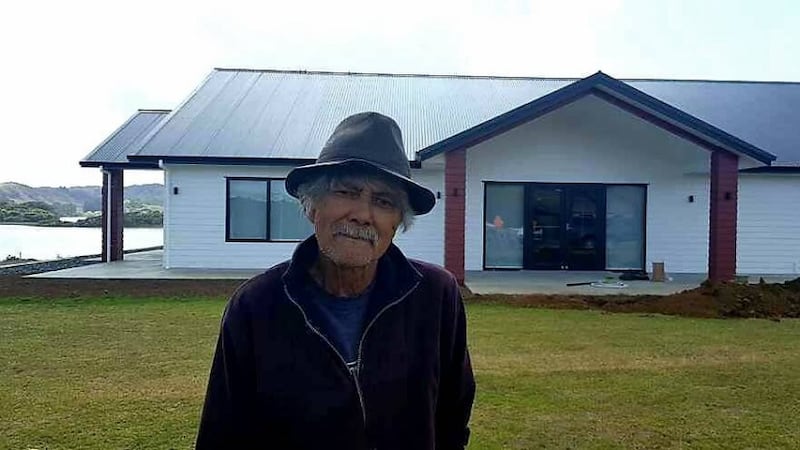Meto Hopa, a kaumātua of Kāwhia Moana shares with us the importance of kawe mate ahead of the opening of the wharekai for Ngāti Hikairo of Tainui at his marae Waipapa.
The new wharekai at Waipapa Marae in Kāwhia Moana will be opened next week to mark their biggest annual event of the year, the Waipapa Poukai.
A big part of any poukai across Tainui is the kawe mate, the memorial ceremony where iwi can acknowledge and express their affections and grief for family and tribal members who have passed away the previous year.
They are dressed in black and given a special place to sit on the marae during the poukai ceremony to acknowledge their role as the traditional carriers of mourning.
The traditional karanga from the women pays tribute to the dead in the same way the whaikōrero do from the paepae (orator’s bench). However, the whaikōrero will also acknowledge the service and the events that exemplified their lives.
Hopa says, “There is no rongoā or panacea for the pain and grief from losing a family member.”
However, he makes the point that the kawe mate is the tradition in the Tainui region, where King Tuheitia provides the symbolic whāriki or mat to greet and farewell the dead at the poukai in a traditional memorial ceremony.
“While our women are the traditional carriers of mourning, our king is the bearer of mourning referred to as te pouaru o te motu.”
This year is even more poignant as the King and whare ariki (royal household) have the pare kawakawa (mourning wreath) as they mourn the death of the King's sister.
"Our King has just lost his youngest sister, Manawa Clarkson, we are in mourning with our King."
In the Tainui region, he notes, the kawe mate is an intrinsic element in the healing process for families in mourning and the tradition of the poukai allows King Tuheitia and the kāhui ariki, or extended royal family, to share in their grief.
“There are 29 poukai in Tainui and we all take part in processing our grief with the kawe mate. For the people, this is a very important part of the poukai celebration.”
When the sacred ritual of the pōwhiri is completed with the hongi, the king, as the bearer of mourning, will lead the pouaru and whānau pani into lunch with the people. This is the kaupapa that underpins the symbolic traditions of the poukai, the sharing of food with the pouaru, the whānau pani and the rawakore, the widows, mourners and the poor.
As an aside, Hopa laughs saying, “As hosts of the poukai, this is also our moment to show off our traditional delicacies but with these modern facilities who knows what our cooks will come up with now. But, at the end of the poukai, it’s the sharing of food with the mourners and the less fortunate that make our poukai unique.”
After the poukai meal, the King and the people will retire to the marae to discuss political issues of importance to the King, the tribe and the locals.
Symbolically, the poukai tradition evolved from the period following the New Zealand Land Wars when the people in Tainui suffered huge poverty and ill-health after their land was stolen through confiscations. It was against this political backdrop that King Tāwhiao created the poukai tradition.
“One of the first words I remember growing up as a child here in Kāwhia was the word poukai and the next word was raupatu, land confiscation and they went hand in hand with the Kīngitanga. The Kīngitanga is our tribal institution and the head is King Tuheitia and this year Ngāti Hikairo will reinforce our allegiance to the King when we present him with our kawenata, a signed document of our allegiance,” he declares.
Hopa says the opening of the new wharekai will mark a historical event for Ngāti Hikairo, as will the signing of the kawenata.
“These are important events that will take place this year but the kaupapa on the day as it is every year is the poukai and that will never change,” Hopa says.

